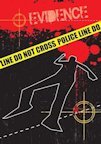When I was a kid growing up in the 1950s, there was very little talk about guns that didn’t in some form or another relate to Cowboys, Indians and the Old West. Actually, the Old West wasn’t really that old, because it was only in 1890 that the Census Department stated that the frontier was now ‘closed.’ But the West was old enough to be featured in Shane, the very first movie I went to see, I never missed an episode of weekly television shows like Gunsmoke starring James Arness, and I chased plenty of make-believe Indians with the Colt Single Action Army plastic revolver strapped around my waist.
The kids growing up today continue to see lots of guns on video and tv, but the context has changed from Westerns to soldiers, with the guns now symbolizing our overseas military adventures in places like Afghanistan and Iraq. And there doesn’t seem to be a single gun maker who doesn’t try in some way to tie his products to the military, and I’m not just talking about the obvious connections between Bushmaster or Colt black guns and the battlefield; take a look at how Glock is pushing its military product line or the soldier-like images behind Smith & Wesson’s online rebate form.
If you really want to see a consumer-products company that’s gone whole hog for the military look, take a gander at the new tactical online store of the NRA. Wait a minute. I thought the NRA was a gun-advocacy organization that promoted gun safety, sport shooting and, most of all, the protection of our civil rights (a.k.a the 2nd Amendment which the NRA claims to be the most important civil right of all.) Since when did they become involved in promoting, never mind selling tactical gear to guys and gals?
Actually, from as long as I can remember, the NRA always sold products that promoted its own brand, like books on shooting and training, decals for the back of the truck or the side window of the car, and caps, shirts and other garments that proclaimed one’s support of gun rights, freedom and the American way. There’s nothing wrong with any organization securing its financial base by selling items that both increases the bottom line as well as getting the logo and the message out in front of the public eye. But what I find interesting about the new tactical product line is that for the first time, as far as I can remember, the organization is selling products that are actual accessories for guns. It’s one thing for an organization to sell a shirt embossed with a logo which can be worn at a shooting range but can also be worn anywhere else. It’s another thing to sell hi-cap magazines for AR-15s, or universal gun magazine reloaders, or instant concealment kits which can, according to the advertising, convert “ordinary” packs and bags into “extraordinary” gun concealment systems.
The NRA isn’t selling these products because they are trying to start a new trend. The fact is that promoting guns and gun gear has become part-and-parcel of the general militarization of our culture since the horrific events of September 11, 2001. After all, if we are going to let the local cops ride around in armored personnel carriers and carry bayonets on their AR-15s, why should we be shocked when the NRA sells tactical-style boots for only $129.95?
The great irony in the NRA’s attempt to make common cause with the military is the whole point of the 2nd Amendment was to give citizens the right to defend themselves with guns because liberties might be threatened by a central government that had a monopoly on armed force. Of course the Framers couldn’t imagine a central government run by a liberal who also happens to be Black. For that matter, I can’t imagine that any of the stalwart defenders of our civil rights who happen to be selling goods in the NRA tactical store know or even care what the 2nd Amendment really means.



Recent Comments